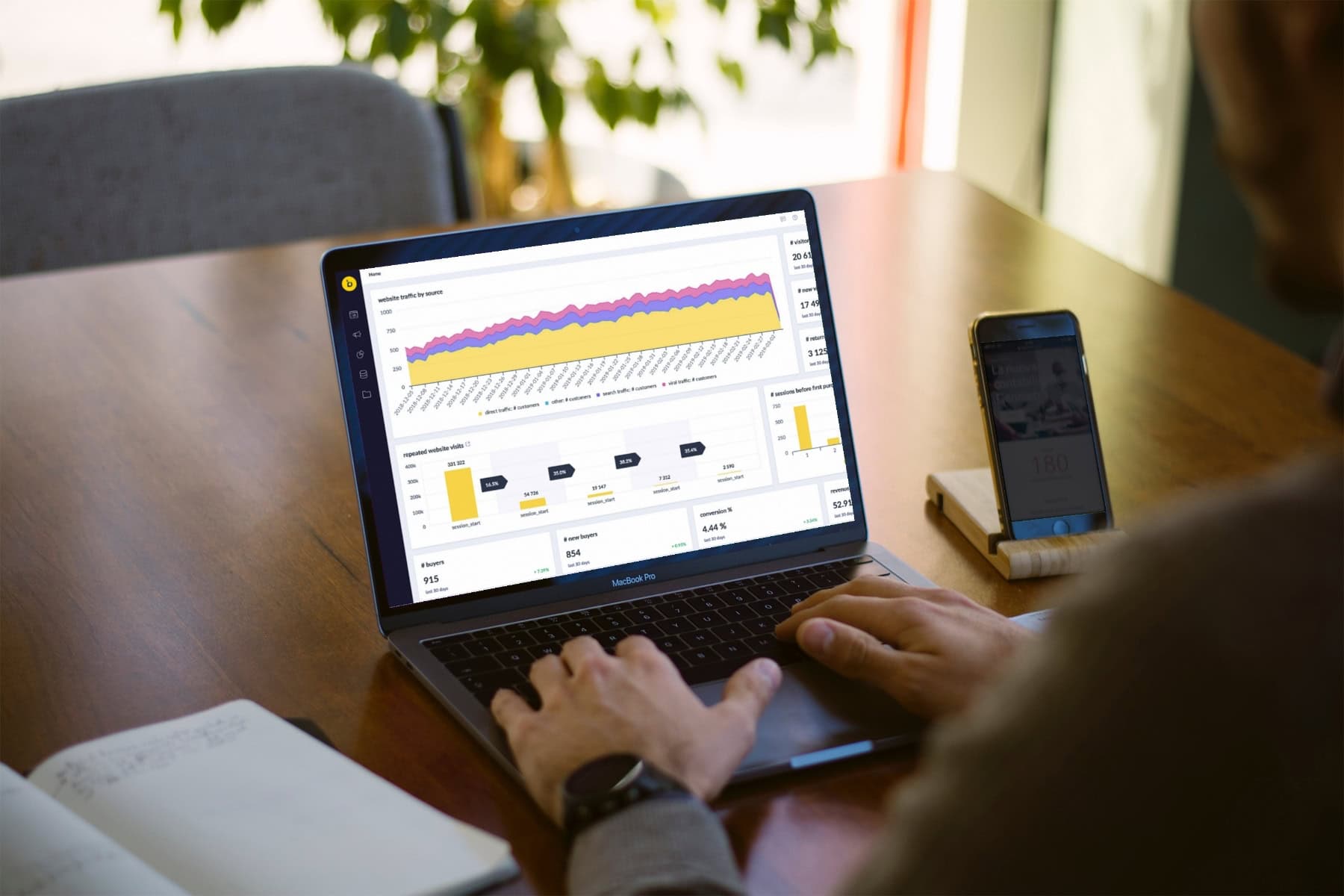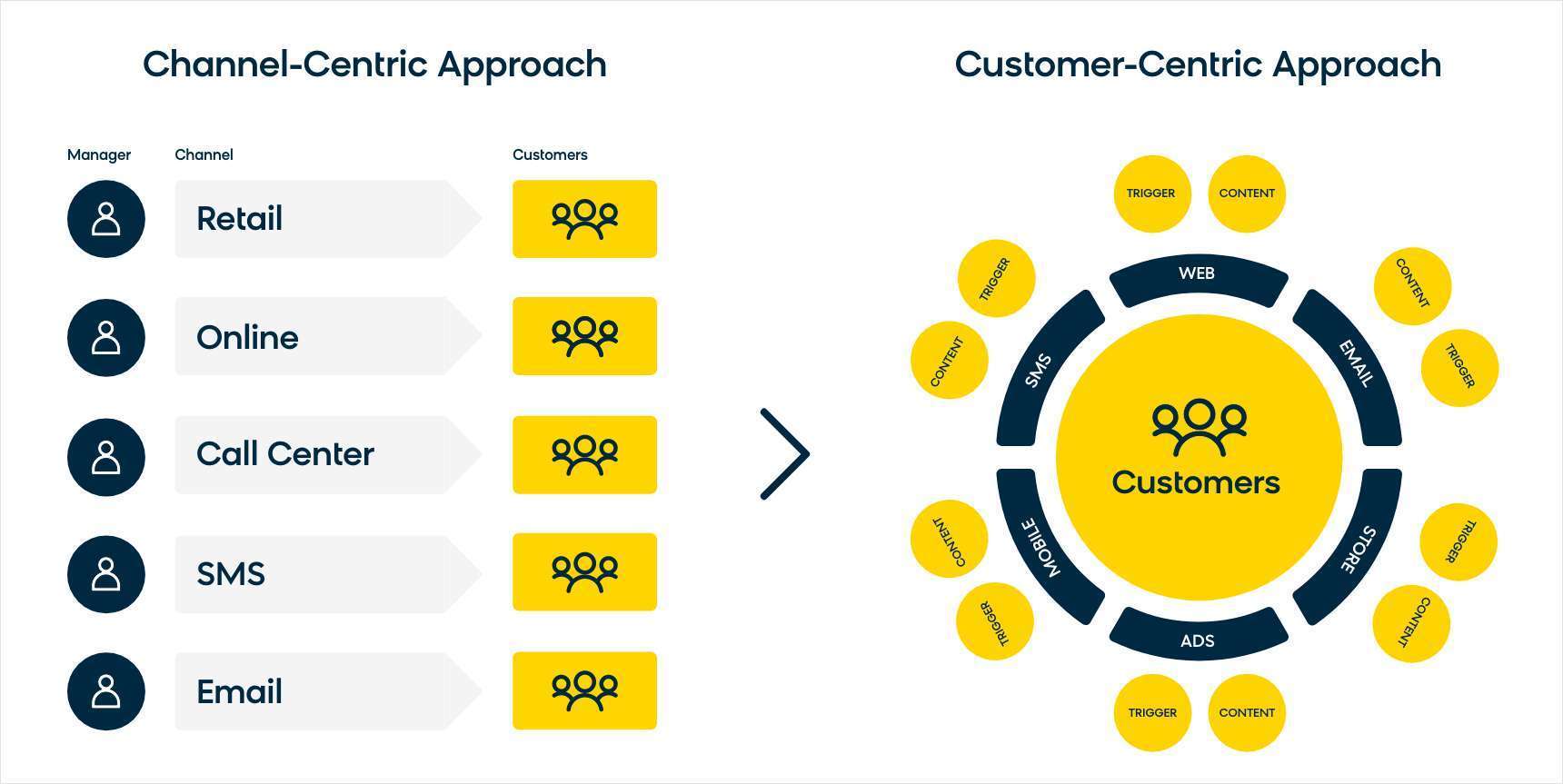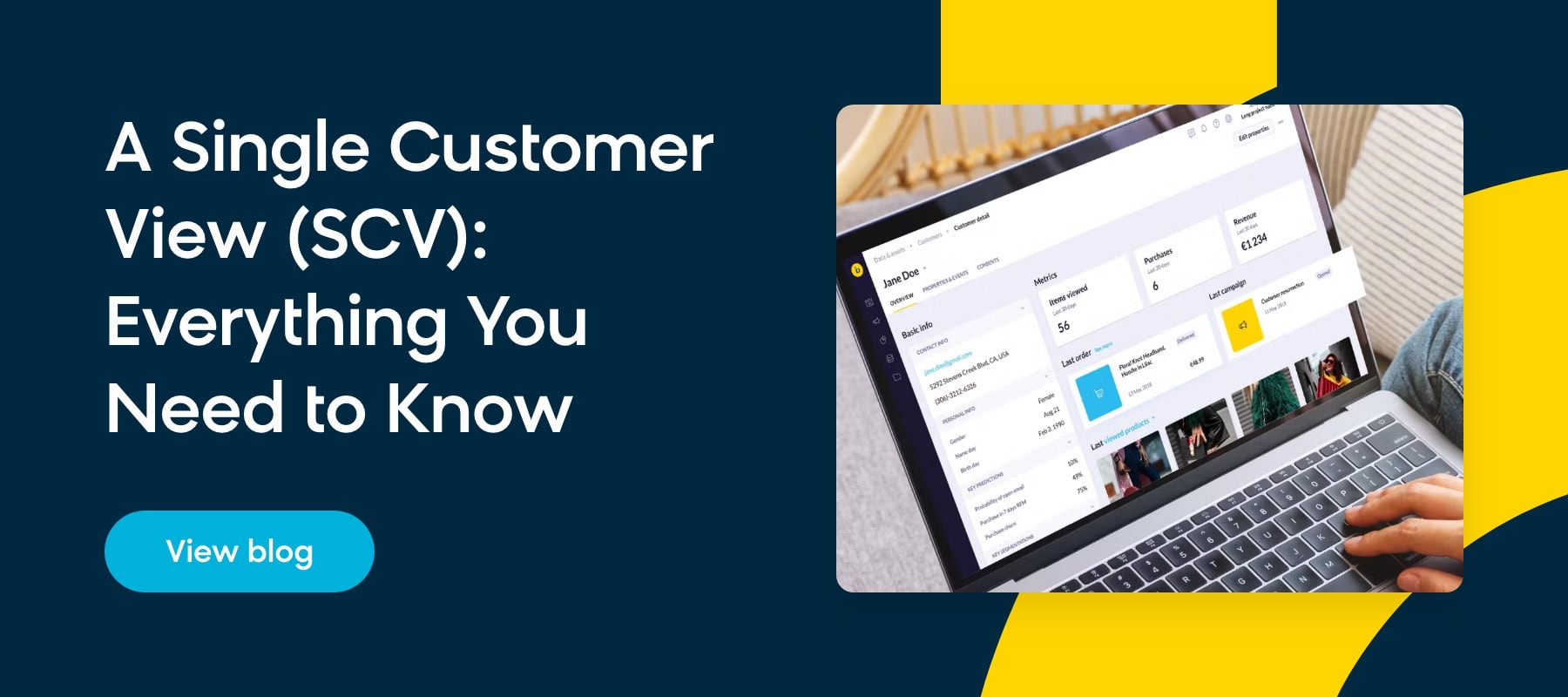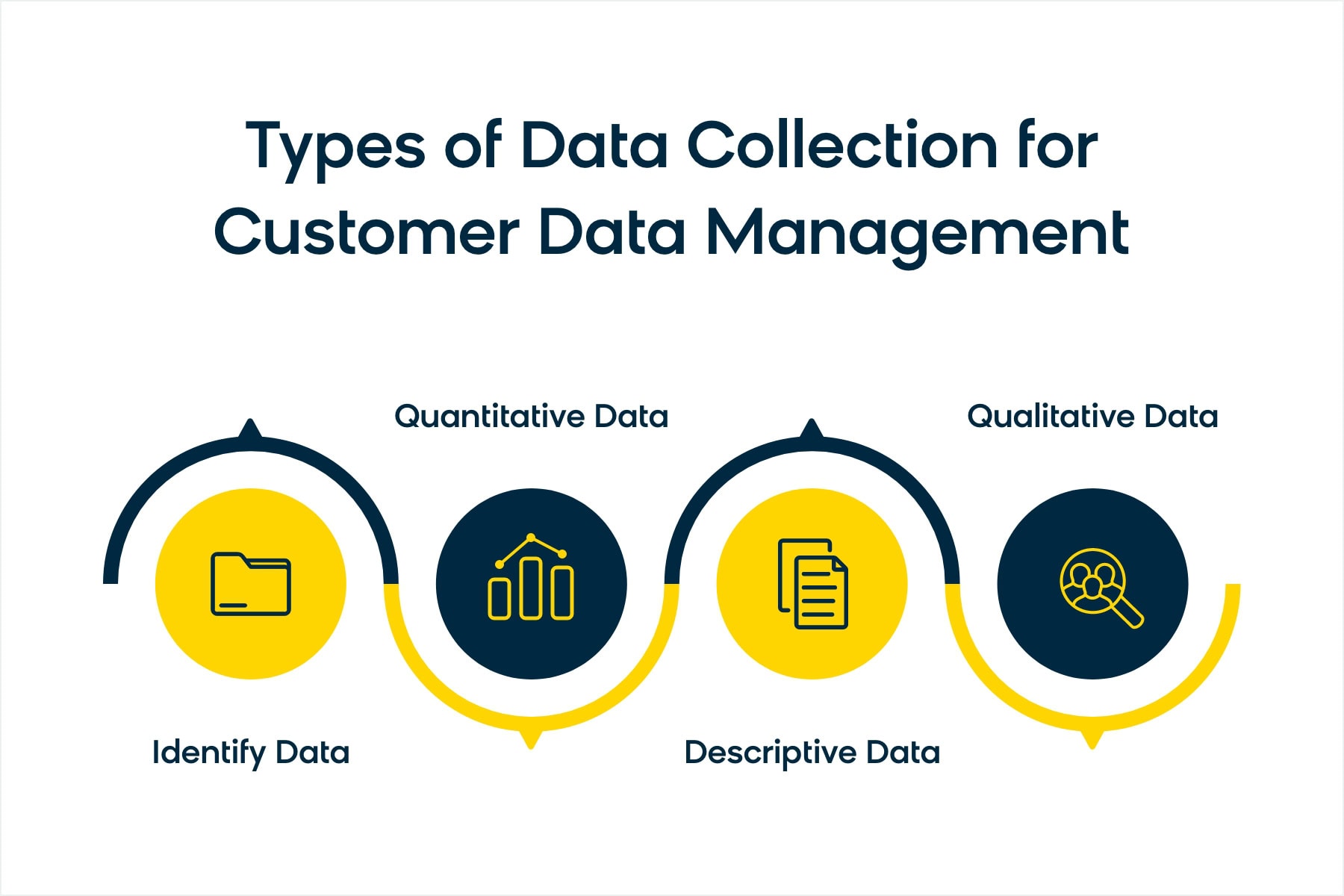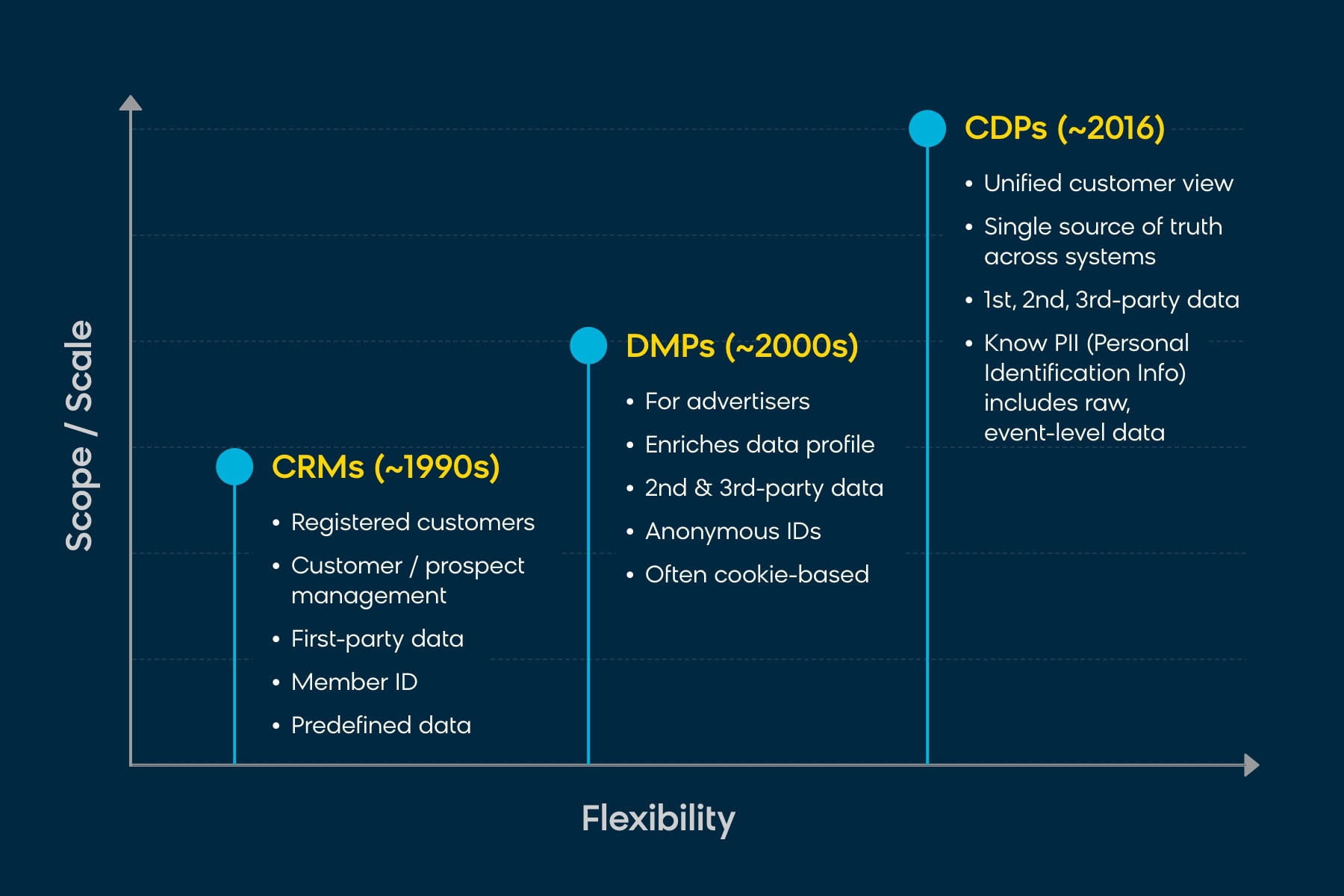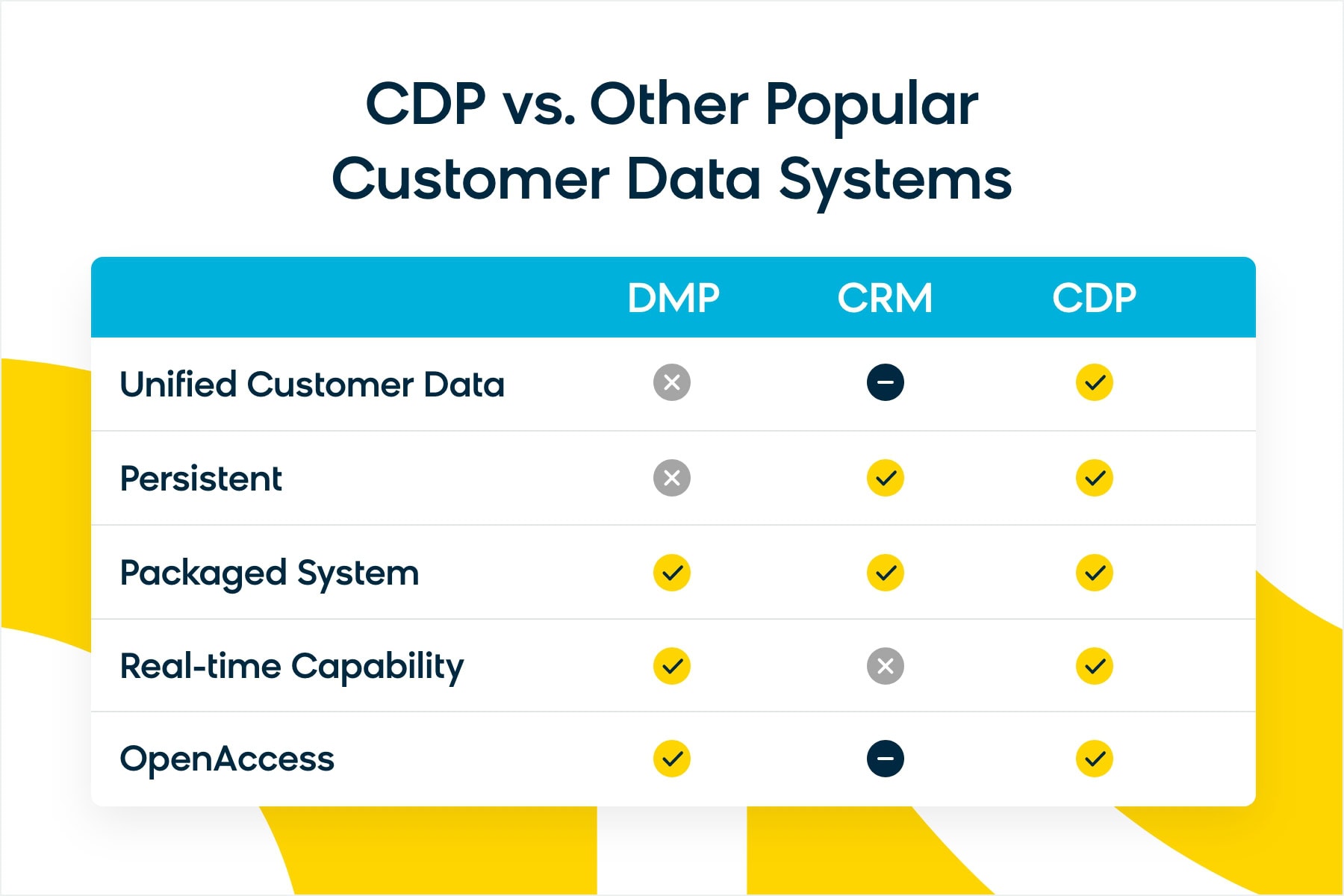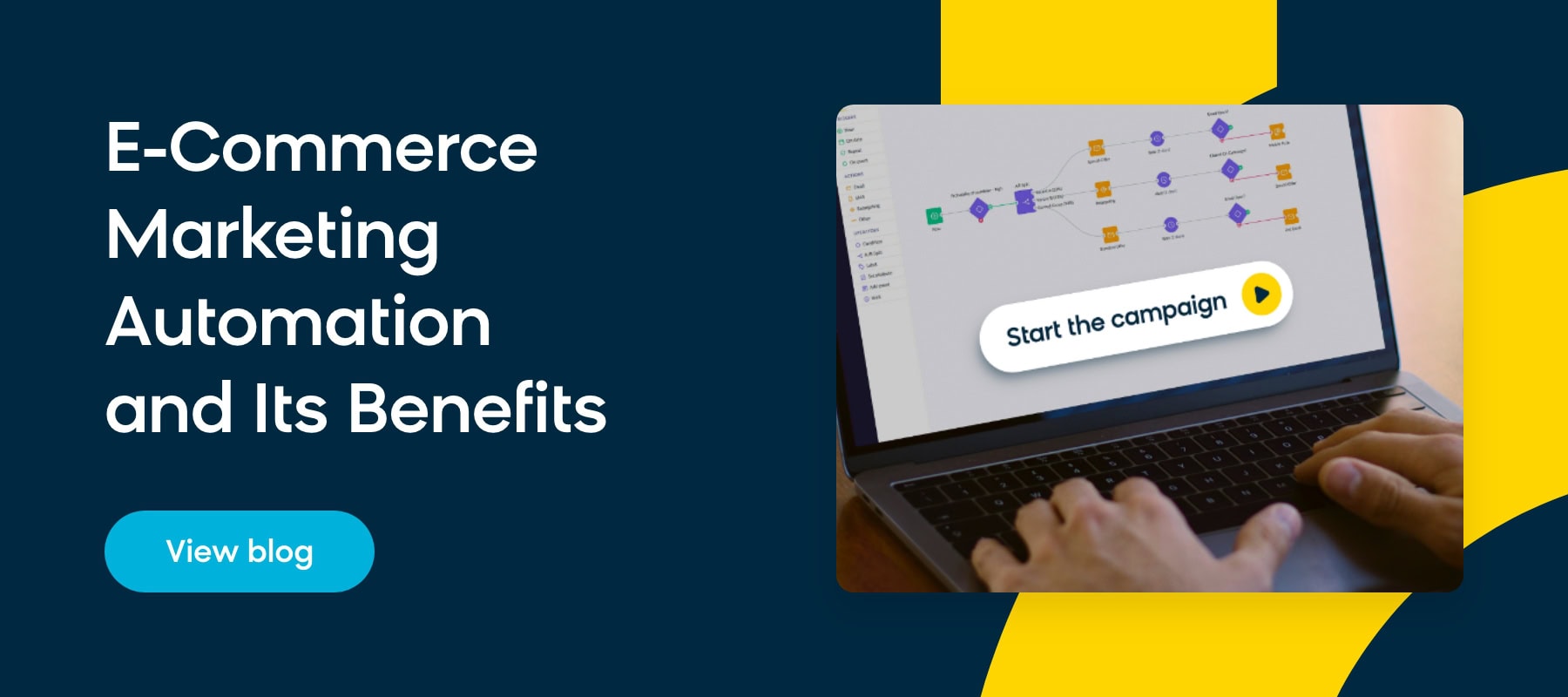If your business wants to thrive in the modern ecommerce landscape, customer data management needs to be a priority.
We’re experiencing neck-and-neck competition in the current state of digital marketing, and customer data management is one of the key capabilities that sets the best businesses apart from the rest.
In the world of ecommerce, there are ever-evolving methods of leveraging data to make smarter business decisions. Customer data management software is the best way to keep up with these changes, and as companies adapt and adopt better technology, they are quickly realizing these tools produce measurable results.
But if those efforts are not well calculated, thought out, and aligned with your data management goals and functions, businesses of any size can find themselves drowning in a torrent of data. That’s the danger of the information age — with all this data at our fingertips, how do we tell which data points are important?
Yes, analyzing and tracking data is crucial. But your business can’t waste effort measuring everything that moves. Instead, significant energy should be spent determining what to measure, and what importance will be placed on the numbers.
So, with data flowing in from every corner, what should be measured? Where should it be stored? How should you collect and analyze customer data and use it to make intelligent business decisions?
And of course, the most difficult part of the process — where to start?
This article will outline answers to all these questions, and shed light on some of the most pressing customer data management issues for companies today.
- Modern ecommerce provides a multitude of customer touchpoints and data sources to gain customer insights from, and it’s vital for businesses to have a customer data management strategy in place to sort through and structure relevant data.
- Managing customer data requires a customer-centric approach and an efficient, scalable data management system, like a customer data platform, to organize and consolidate customer information into individual customer profiles.
- With a unified view of your customers and their data, you can properly segment your audience, create personalized marketing campaigns, and optimize your customer journey.
What Is Customer Data Management?
Customer data management (CDM) is the process of gathering, organizing, and analyzing data about your customers. It’s a crucial mechanism when considering improvements to:
- customer acquisition, satisfaction, and retention rates
- visibility of customers and communication strategies
- increased data quality and higher revenue
This definition is a broad one because customer data management is not a simple undertaking. It encompasses many different tasks, procedures, and responsibilities that businesses need to take into consideration.
Why Is Customer Data Management Important?
Data is the end-all-be-all of modern ecommerce. The key to any company’s success now lies in the ability to effectively manage streams of customer data. Though as the Harvard Business Review reports, most companies still remain badly behind the curve:
- Cross-industry studies have shown that on average, less than half of an organization’s structured data is actively used in making decisions — where less than 1% of its unstructured data is analyzed or used at all
- More than 70% of employees have access to data they should not
- 80% of a data analyst’s time is spent just discovering and preparing data
For businesses looking to optimize their data management, there are plenty of internal challenges that need to be addressed just to get your company ready for a customer data management strategy. Organizing cross-department communication, mapping out your customer journey, and putting a smart customer data mangement process in place for making critical decisions on the fly are all factors that need to be accounted for.
Correctly gathering data on customers can deliver huge benefits to organizations across all sectors, but the configuration of such a huge project calls for a technological solution — which is why companies turn to new tools in data aggregation that improve their data management performance.
The Benefits of Customer Data Management
Collecting data correctly and efficiently might sound like a difficult job, but the advantages far outweigh the costs. Every touchpoint with your customers can benefit from streamlined and organized customer data.
Here’s a breakdown on why creating a reliable customer database should be your top priority.
Gain New Customers With Data-Driven Communications
Acquiring new customers is no easy task, but an up-to-date customer database can drive your business communications without you having to spend a fortune on uninspiring and detached advertising.
It’s all about knowing who your ideal audience is. When your customer data is organized and you have a complete view of who your customers are and the actions you want them to take, you can identify your most high-value customers. Using their most prevalent traits and shopping habits as a foundation, you can attract new customers that share similar data points.
And as soon as new customers start interacting with your business, they’re offering valuable information that marketing teams can use to build a relationship with your brand — what they clicked on, what they didn’t, and so on.
Plus, businesses can collect customer data by simply asking for it and rewarding that trust by communicating relatable discounts, events, and other promotional reminders (e.g. free shipping for first purchases). A pleasant first impression improves the likelihood of clients becoming strong brand promoters.
Cultivate Relationships and Keep Existing Customers
A whopping 80% of sales comes from 20% of your existing customers.
Once they’re in your door, retaining customers should be a main focus. And the only way to wow your audience and keep them coming back for more is with a data-fueled experience.
With a strong customer data management strategy, you can build marketing campaigns that activate your collected data, creating content that speaks directly to your audience. Your email marketing can take your customers’ previous purchases into account, your SMS campaigns can offer personalized recommendations, and so on.
These are the necessary steps for building long-term relationships with your customer base. Plus, creating customized, positive experiences can produce recurring brand advocates that generate highly valued, word-of-mouth marketing.
And once you develop a fully functioning customer data management strategy, your marketing team can start calculating important metrics like customer lifetime value to help keep your customers happy.
Segment Your Audience for Better Targeting
Collecting relevant customer data will allow you to better segment your target market, discover trends in buying behavior, and customize individual communication strategies.
Proper segmentation is what separates the best ecommerce marketing from the rest. Using like-minded characteristics and data points to organize customers into relevant segments, you can adapt your marketing campaigns to meet the unique needs of every audience you’re trying to reach.
The more relevant and fine-tuned your customer segmentation, the more strategic your decision making will be.
Read This Next: Customer Segmentation: Options Marketers Should Know
Map Out an Optimized Customer Journey
The customer’s path to purchase can be a long, unpredictable process with multiple touchpoints, numerous devices, and participation both online and offline. All those interactions tell a story you need to understand.
Relevant customer data collection from every stage of their customer journey can be analyzed to orchestrate a more productive experience.
With a good CDM strategy, each step your audience takes can inform the next one, optimizing and enhancing their relationship with your business.
How To Craft a Customer Data Strategy
Viewing all the benefits of customer data management causes one underlying factor to stand out: For a customer data management system to successfully produce results, data collection from various sources needs to be coordinated around the customer rather than individual channels.
This distinction is key to crafting a modern customer data strategy. A channel-focused approach can cause data silos and disconnected efforts — with every channel working separately, customer data is fragmented and can’t be shared in real time, so your email campaigns can’t easily inform your SMS campaigns, your paid ads, and so on.
A customer-centric approach solves this problem by making the customer the center of your data management strategy. To make this work, you need to create a holistic view of individual customers with all their relevant information, interactions, and preferences available in one place, or a single customer view (SCV).
As a result, this centrally located and widely accessible customer profile is available throughout company departments as opposed to being warehoused in separate locations under lock and key. Each customer interaction is then relevant to their previous one, regardless of the channel, encouraging consistent, transparent experiences with your brand.
Read This Next: A Single Customer View: Everything You Need to Know
An Example of Customer Data Management Strategy In Action
So, what does this customer-centric strategy look like in practice? Just ask L’azurde, a leading jewelry manufacturer and Bloomreach Engagement customer.
L’azurde faced a challenge that many digital commerce companies encounter — data that is distributed across different systems that is difficult to activate. With goals to completely consolidate its data and use it for intelligent ecommerce personalization, L’azurde needed help in merging its customer database, personalizing customer experiences, and increasing revenue.
Using Bloomreach Engagement and our trusted partner, Voxwise, L’azurde was able to collect, clean, and activate its customer data so it could personalize its customer touchpoints and make an impact on their bottom line.
And by collecting customer data and organizing it into a single customer view, the brand did just that — L’azurde now reaches 20x more customers with personalized marketing efforts and earns an estimated 1€ million more per year.
What Are the Four Different Customer Data Types and How Do You Collect Them?
As we mentioned at the start of this blog, collecting the right type of customer data is a crucial aspect of your data management strategy. A truly effective database needs to identify the type of consumer data it’s collecting, as well as its value.
But what is the right type of data? To illustrate the fundamental data types and their uses, we’ve laid out four key segments: identity, quantitative, descriptive, and qualitative data.
One note on data security: When collecting and storing data about your customers, you should consider the laws and legislation involved in the country and location of each customer. Learn more about GDPR compliance and how your company can stay ahead of the curve.
Identity Data
Identity data is a user’s basic personal information. By collecting a customer’s personal data, businesses are able to build a unique profile for each individual along with whatever contact details are needed to reach out to them.
This type might seem trivial, but it is the backbone of all your ecommerce personalization efforts. You need relevant and up-to-date data so that all your communications can be customized to a user’s specific stage in the customer journey.
Examples of identity data include:
- Name: Title, First Name, Last Name, etc.
- Personal: Date of Birth, Region, Gender Identity, etc.
- Address: Shipping Address, Billing Address, etc.
- Telephone: Home Number, Work Number, Cell Phone Number
- Social Network: Facebook, LinkedIn, Twitter, etc.
- Account: User IDs, Payment Preferences, etc.
How To Collect Identity Data
Typically, you’re already collecting this type of data when your customers enter their payment details upon checkout, sign up for your newsletter, or voluntarily provide it in order to receive a product, service, or incentive.
Depending on your industry, you may also consider:
- Tailored sign-up forms
- Discount vouchers for first purchases
- Providing preorder opportunities
- A tailored ecommerce checkout process
- Warranty cards
- Loyalty/rewards programs
Quantitative Data
Understanding how the customer interacts with your business is invaluable for creating the right customer experience. To do this, businesses need to collect measurable operational data, or quantitative data.
Quantitative data is information collected throughout the customer journey, from discovery details and various channel interactions to conversion-specific steps that led to a purchase. This can inform a customer’s individual profile and help you optimize your marketing campaigns.
Examples of quantitative data may include:
- Online/Offline Transactions: Product Purchased, Amount of Purchases, Time of Purchase, Order/Subscription Value, Order/Renewal Dates, Cart Abandonment, Product Returns, etc.
- Inbound/Outbound Communication: Date, Time, Channel, Opens, Click-through Rates, etc.
- Online Activity: Website Visits, Product Views, Online Registration, etc.
- Social Network: Social Handles, Groups, Interactions, Interests, etc.
- Customer Service: Complaint Details, Customer Query Details, Call Center Communication, etc.
How To Collect Quantitative Data
The goal of quantitative data collection is to understand the decision-making process of your customers as they interact with your company. What led them to discover your business? Which channel drives the most conversions?
Channel-specific tools for collection are available throughout the customer lifecycle and should be tailored to measure your marketing goals and strategy.
Where to start collecting quantitative data:
- Web analytics tools such as Google Analytics
- Website cookies or mouse-tracking heatmaps on landing pages
- Tracking pixels in promotional emails and newsletters
- Recording historical purchase transactions
- Recording historical customer support communications
- Social media activities
Descriptive Data
Descriptive data aims to collect additional demographic information that further outlines customer personas. Think of it as the next level of identity data — while basic information can tell you the bare facts about a person, descriptive data paints a picture of their personality.
Once you collect information on a person’s background and preferences, you’re one step closer to using predictive analysis to implement optimal marketing efforts.
Examples of descriptive data include:
- Family: Marital Status, Relationships, Number of Children, etc.
- Lifestyle: Property Type, Car, Pet Ownership, Hobbies, Collections, Interests, etc.
- Education: High School, College, Advance Education, etc.
- Career: Job Title, Job Description, Income, Professional Background, etc.
How To Collect Descriptive Data
Obtaining high-quality descriptive data is no easy feat and requires additional ingenuity. Companies typically turn to in-depth questionnaires for their data collection, which dive into discovering seasonal growth and decline, buying behaviors, and lifespan of the customer cycle.
Here are a few methods to collect descriptive data:
- Open-ended interview questions
- In-depth questionnaires and surveys
- Observations of target behavior
- Focus group interviews
- Advanced lead forms
Qualitative Data
Lastly, we have qualitative data, which can offer insight into the choices your customers make.
Qualitative data seeks to answer the “how” and “why” questions pertaining to your customer profiles, such as how opinions and attitudes are formed, why people behave the way that they do, and what are the differences between social groups.
Examples of qualitative data include:
- Attitudinal: Perceived Value, Rating, Feedback, Repurchase Likelihood, etc.
- Motivational: Reason for Purchase, Customer Needs, etc.
- Opinion: Likes and Dislikes, Preferences, etc.
How To Collect Qualitative Data
Qualitative data collection can be a bit tricky since gaining this level of insight into customer habits is more time consuming, and thus more expensive than collecting other types of data.
Regardless, available methods include direct interaction on a one-to-one basis, interaction with individuals in a group setting, or indirect interpretation of customer opinions on various communication channels.
Qualitative data can be collected in the following manner:
- Industry-related review websites
- Social listening with social media monitoring tools
- A tailored newsletter sign-up process
- Employing a favorite, save, or rating system
- Deep listening and feedback form questions
Why You Need Customer Data Management Software
Just a few years ago, manually storing data on Excel sheets or similar spreadsheet software seemed like a reasonable, low-cost solution for customer data management. But for enterprising businesses, that approach just doesn’t cut it anymore. As your business grows, so does your need to manage customer data.
Before long, you’ll find yourself lost in the complex and voluminous data sets offered by today’s big data trend — not to mention a lack of valuable insights that could give you a competitive advantage.
You need an efficient customer data platform to store, track, and make sense of all your incoming information. And it is wise to invest in the right tools from the start, rather than having to adjust once you run into lost customers, a poor reputation, and the limitations of a spreadsheet.
There’s a wide variety of customer data management collection platforms available to store and collect customer data, but in terms of providing the personalization at scale that many consumers now expect, there’s one that stands out.
CRMs vs. DMPs vs. CDPs
Customer Relationship Management Platforms
Historically speaking, customer relationship management (CRM) platforms are the original data management platforms. They were the first data aggregation tools to come out in the 1990s.
As a customer data management system, their sole purpose was to collect known details (first-party data) about customers and manage interactions — think identity and quantitative data rather than descriptive and qualitative data.
CRM Pros
- CRM platforms are built to engage with existing customers, gathering strategic information to fuel improved customer service, aid sales initiatives, and inform marketing agendas.
- A CRM can quickly automate many marketing tasks, including lead creation from sign-up forms and quick reporting. With the improved time management these platforms offer, there’s space to focus on more important details.
- Businesses can easily integrate a CRM with external tools to customize marketing strategies and gather even more data.
CRM Cons
- CRMs were never built to know about visitors before they become customers, making the single customer view a difficult achievement — and an admittingly expensive endeavor. This becomes increasingly difficult when adding social media channels, advertising campaigns, web behavioral data, and other sources of data into the mix.
- What CRMs lack most are real-time capabilities. They’re great at managing a few actions and doing so thousands or even millions of times, but they aren’t that adaptable. The more you customize them, the more messy and unmanageable they become.
Data Management Platforms
As the internet became more trackable in the 2000s, an alternative data aggregation platform came onto the scene. Aiming to cater to advertisers through the use of cookies, a data management platform (DMP) assists with the planning and execution of media campaigns.
Unlike CRMs, DMPs work to unify anonymous IDs by using data sources that could be bought (second- and third-party data) rather than individually collected (first-party data).
DMP Pros
- DMPs allow you to divide users into segments by stitching together bits and pieces of second- and third-party data from cookies and other behavioral data. These segments can then quickly be put to use when personalizing media and dynamic advertising.
DMP Cons
- DMPs only store anonymous, third-party data with limited segmentation, so they’re heavily outperformed when dealing with more precise identity matching. This creates a unified customer data view, but multi-department sharing is completely out of the question.
- Data from DMPs is short-lived, based on the 90-day lifespan of a cookie. And that’s besides the fact that cookies are even less effective due to GDPR legislation.
- Integrating a DMP into your organization’s current environment can be challenging. It requires significant technical and domain knowledge. Such data aggregation technology might turn out to be too complex for employees, introducing a steep learning curve during training on how to properly use it.
Customer Data Platforms
As data became the name of the ecommerce game, so did the troves of information that companies could access, creating a dire need for flexibility and scale that could take on the demand for improved customer experience and omnichannel marketing initiatives.
This paved the way for the newest player among the aggregated data platforms, the customer data platform (CDP).
Read This Next: The Definitive Guide to CDPs
A customer data platform easily integrates with existing data, incorporating first-, second-, and third-party data, as well as offline and unstructured data, all in one system.
CDP Pros
- While CRMs and DMPs provide segmentation, CDPs centralize all the customer data coming into your company, regardless of what channel or device the customer used. It organizes all the data you collect around the customer, rather than around the channel or device it was gathered from. The more data sources you have for the CDP to pull from, the more powerful it can be.
- CDPs support real-time data streaming to take immediate action throughout the customer journey, fueling efforts such as personalizing recommendations, activating audiences, and creating upsell opportunities. Flexibility at this scale can be applied to a wide range of channels and purposes, allowing more nimble marketing initiatives.
- Customer data platforms are built for marketers, not IT developers. The all-in-one nature of CDPs makes it very easy to integrate into the existing company environment, without the hassle of creating custom integrations on multiple modules. Having a variety of data sources unified into a single source of customer information enables quick cross-department communication, providing a connected customer experience across all channels using the same interface.
CDP Cons
- The platforms are driven by first-party data, meaning CDPs almost exclusively run on the data collected by your marketing initiatives. Though it’s more personalized and based on real client information, this all has to be collected, and you might find yourself lacking the quantity of data needed to run marketing initiatives at full steam.
Here’s a quick tally of our results:
As the table clearly shows, the most timely and cost-efficient way to manage customer information is to use an all-in-one customer data platform.
And when you combine the power of a CDP with marketing automation capabilities, your business has every tool it needs to execute game-changing marketing campaigns that speak to the right customers at the perfect time using the ideal marketing channel.
Read This Next: Ecommerce Marketing Automation and Its Benefits
A CDP coupled with marketing automation gives marketers the complete toolset they need to create incredible customer experiences. You don’t have to worry about complicated integrations, connecting your channels, or praying that your data is syncing in real time with your automation efforts. Instead, you can rest assured that it’s all working seamlessly in one platform, with a main hub for you to orchestrate truly unique and highly effective campaigns.
This is the tool that modern marketing requires to reach your audience when and where it counts — and it’s exactly what you get with Bloomreach Engagement.
Manage and Apply Your Data in Real Time With Bloomreach
In a fast-paced and rapidly growing space like digital commerce, there’s no time to waste with your customer data management strategy. Your business needs to be collecting the right data, organizing it around your customers, and streamlining it into personalized customer experiences that wow your audience and keep them coming back for more.
That’s why Bloomreach Engagement offers all the features and benefits of a CDP that you need for modern data management, along with our powerful customer data engine to fully activate your data.
You get the most efficient and holistic tool for crafting personalized customer experiences with a unified view of real-time customer data, campaign automation across 13 channels, artificial intelligence built for commerce to customize and scale campaigns, and advanced analytics to measure success.
There’s no better technology for optimizing your customer data management on the market. Visit our site to learn more about what Bloomreach can do for you.



